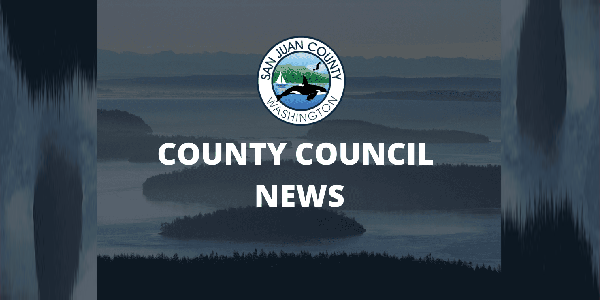— from Emergency Operations Center, Camp Murray —

Newest numbers. The Department of Health reported a total of 69,389 confirmed cases as of 11:59 pm on August 19. There have been 1,837 COVID-19 deaths in Washington. The statewide rate per 100,000 of newly diagnosed cases during the prior two weeks is 109. The goal is fewer than 25.
For the most recent tally of cases by county, demographics, and more, visit the Department of Health’s dashboard and the state’s COVID-19 risk assessment dashboard.
COVID-19 Long-term care facility data. As of August 17, a total of 6,257 COVID-19 cases (9% of total cases) and 998 deaths (56% of total deaths) have been identified as associated with a long-term care facility (i.e., nursing home, assisted living facility or adult family home).
- These cases include residents as well as employees and visitors. Not all of these cases were exposed at a LTC facility.
- Many cases visited multiple places during their exposure period, and some individuals may have visited a LTC facility after disease onset.
This week’s JIC media briefing and governor press conference available on TVW. Yesterday’s JIC media briefing with leaders from the governor’s office and DOH is available on TVW. DOH leaders provided an update on COVID-19 activity in the state, saying there appears to be some positive movement in the trends that is likely due to increased face mask usage. But they cautioned there is still a long way to go before reducing overall rates to a low-risk level. The statewide rate per 100,000 people of newly confirmed cases during the prior to weeks is 109, and the goal is to be below 25. Getting to that low-risk level so we can reopen will require everyone to continue doing their part – wearing face masks when not at home, staying six feet apart and minimizing in-person interactions and social gatherings.
The governor’s press conference from this morning is also available on TVW. He provided further updates about the state’s COVID-19 response including new testing efforts for agricultural workers and the state’s intention to pursue the limited new federal unemployment benefits for workers unemployed due to COVID-19.
New guidance available for museums, bowling and agritourism; updated guidance for outdoor recreation. Gov. Jay Inslee today announced and updated guidance as part of Washington’s Safe Start phased reopening plan.
“We have worked with stakeholders for weeks and sometimes months to arrive at these guidelines. We continue to balance the need for activities that contribute to physical, mental, and emotional well-being with the steps needed to control the virus. Our ability to reopen depends on every Washingtonian doing their part to ensure fewer, shorter and safer interactions.” said Inslee.
- Museums: These guidelines would allow museums in Phase 2 counties to operate as long as they meet certain requirements. Museums in Phase 3 counties would be required to lower occupancy.Read the full guidance here.
- Bowling: These guidelines would allow for bowling league play in Phases 2 and 3, as long as facilities meet certain requirements. Read the full guidance here.
- Agritourism: This guidance would allow for agritourism such as U-pick farms and tree farms to operate in Phase 2 counties. Read the full guidance here. Read the attached memo here.
- Outdoor recreation: Updates to the outdoor recreation guidance clarify restrictions to non-spectator motor-sports in Phase 1 and Phase 2 of the Safe Start plan. These changes go into effect on August 24. Read the full updated guidance here.
A full list of current reopening guidance is available here.
Inslee updates proclamation requiring agricultural worker testing. Gov. Jay Inslee yesterday issued an update to Proclamation 20-57, “Concerning the Health of Agricultural Workers.” The proclamation now requires agricultural employers to test their workforce broadly when health officials identify an outbreak that passes certain thresholds.
Since the governor first issued Proclamation 20-57 on May 28, the total number of cases in Washington has increased an average rate of more than 500 new cases per day. Many of these are appearing at farms and food-packing facilities, where employees often work, travel, and live together in close contact.
In addition to the governor’s proclamation, Sec. of Health John Wiesman concurrently directed an order to Gebbers Farms, following a significant outbreak among their operations and the subsequent deaths of three of their Okanogan employees. The order will require all Gebbers employees to be tested within the coming weeks, and the effort will be led by the Department of Health’s epidemiology team.
Inslee’s proclamation furthers his commitment to ensure the health and welfare of Washington’s agricultural workers and follows his August 10 announcement of two relief funds and a commitment to additional PPE distribution.
More details and links to the full order and proclamation are available in the governor’s press release.
It’s time for the talk: how to gather together safely. No one wants to get sick or to get someone else sick. We all have different health issues, different experiences and different loved ones we are trying to protect. And, since there is no way to completely protect ourselves from COVID-19, we all have different ways of determining what risks we are comfortable taking and what risks we feel are just too dangerous.
When you are planning to meet up with a friend or family member in person, you may agree that you will be “safe,” but do you both understand what “safe” means to the other person? DOH’s newest blog post outlines the questions and issues to talk through when planning to get together with friends or family.
In all cases, remember that large gatherings are still not allowed. Limit the number of people you interact with weekly to no more than five (10 in Phase 3 counties).
Washington Health Benefit Exchange: Extended enrollment opportunity in response to COVID-19. Individuals who have voluntarily or involuntarily lost health insurance coverage during the public health emergency will have until September 30, 2020 to sign up for coverage through Washington Healthplanfinder. Loss of coverage includes loss of minimum essential coverage (including employer sponsored health coverage or COBRA) and loss of coverage from short-term limited duration plans or health sharing ministries.
Typically, customers losing coverage mid-year have 60 days before and after their coverage end date to sign up through Washington Healthplanfinder. During COVID customers have reported enrollment barriers, including delays in receiving federal or state unemployment insurance payments. To help address these barriers, the Exchange is giving customers experiencing a gap in coverage more time to enroll.
To sign up, customers must call the Washington Healthplanfinder Customer Support Center or contact their local Navigator or producer. Customers who sign up by September 15 can get coverage starting October 1. After September 15, coverage starts November 1.
- Washington Healthplanfinder Customer Support Center
Help is available in over 175 languages.
Language and disability accommodations are provided at no cost. Business Hours: Monday – Friday from 7:30 a.m. to 5:30 pm.
Phone:1-855-923-4633 TTY: 1-855-627-9604
Resources
Washington 211 COVID-19 call center is a general information line related to COVID-19. If you need information or have a general question, call 1-800-525-0127 or text 211-211 for help. You can also text the word “Coronavirus” to 211-211 to receive information and updates on your phone wherever you are. You will receive links to the latest information on COVID-19, including county-level updates, and resources for families, businesses, students, and more.
Washington Listens helps people manage stress and anxiety they may be experiencing because of COVID-19. If you or anyone you know is having difficulties managing stress, call the Washington Listens support line at 1-833-681-0211. Hours are from 9 a.m. to 9 p.m. Monday through Friday, and 9 a.m. to 6 p.m. Saturdays and Sundays. TTY and language access services are available by using 7-1-1 or their preferred method. Resources and self-help tips are available on walistens.org.
**If you are reading theOrcasonian for free, thank your fellow islanders. If you would like to support theOrcasonian CLICK HERE to set your modestly-priced, voluntary subscription. Otherwise, no worries; we’re happy to share with you.**








Here are some Doctors on the Fontline with Covid:
https://americasfrontlinedoctorsummit.com
Worth Watching.